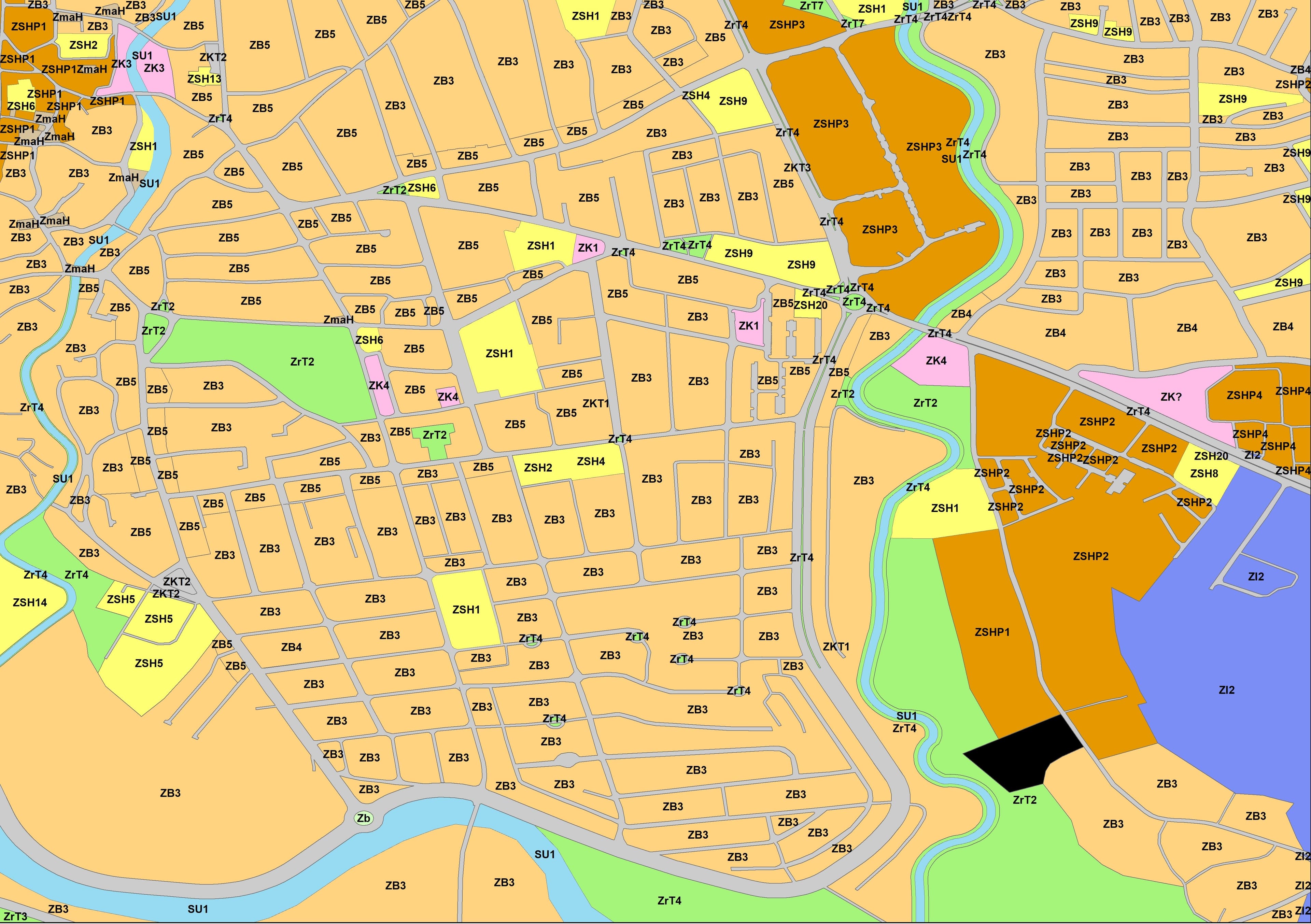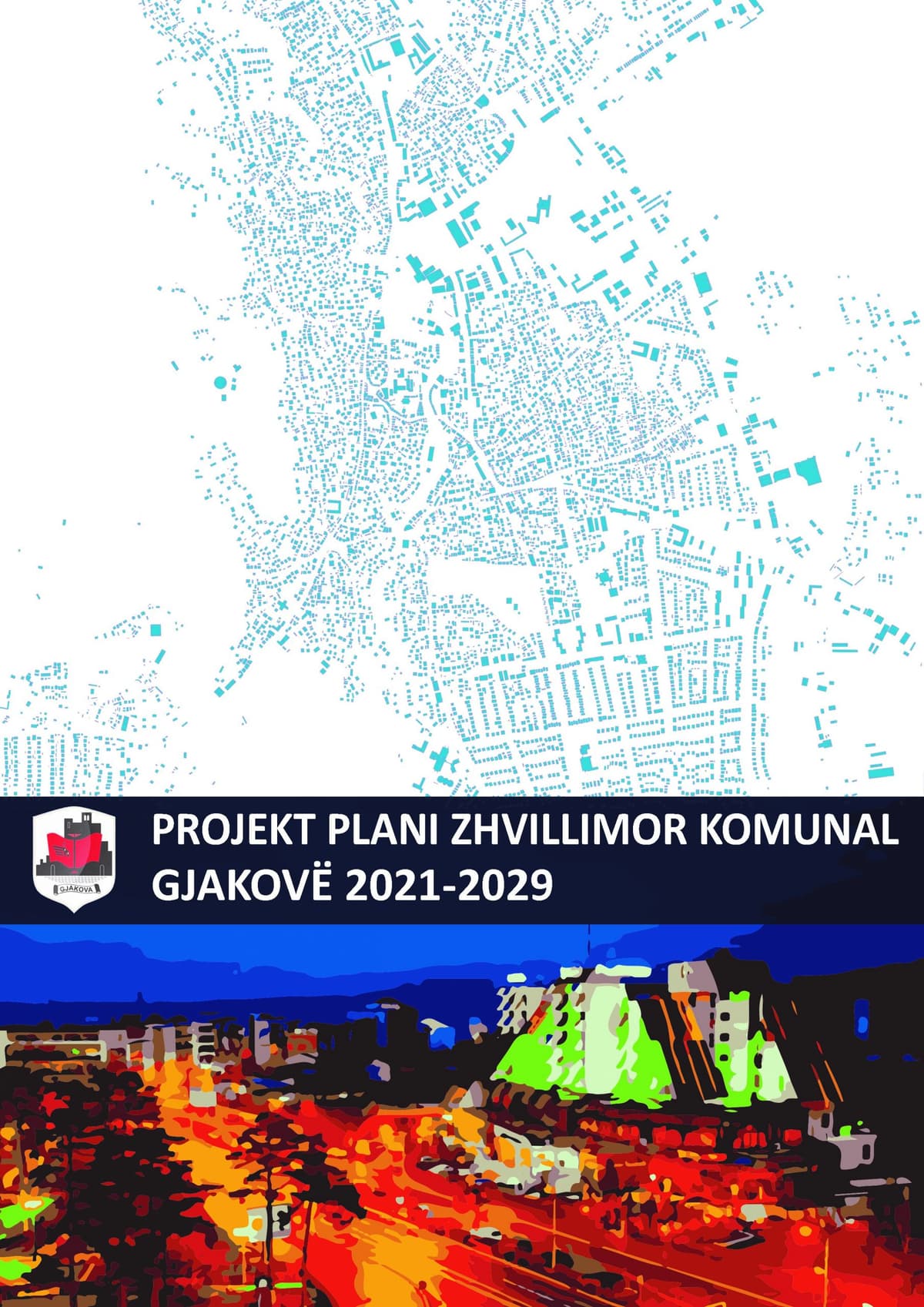
Municipal Development Plan Of Gjakova
INSI
Municipal Development Plan Of Gjakova

1. Economic development;
2. Technical infrastructure development;
3. Transport and transport infrastructure development;
4. Public and social infrastructure development;
5. Environment and risk areas development;
6. Natural, cultural and touristic heritage development;
7. Rural and urban settlement development;
8. Housing development;
9. Informal settlements development; and
10. Land use development.
2. Sectorial Assessment that represents trends, needs, projections, forecasts, and future assumptions that are relevant to the municipality, including population projections, economic condition forecasts, future housing needs, and the movement of people, goods and services along specific communication routes. This section includes the sectorial assessment of the following thematic areas through the textual and cartographic representation of:
0. Demographic development, including population projections and prognosis based on previous demographic trends.
1. Economic development includes the assessment of the local economy such as households, employment and unemployment, economic sectors and their structure, and businesses, agriculture economy, the relation of economic activities of the municipality with the neighbouring municipalities, status of resources and touristic services such as accommodation and food serving spaces, existing and planned economic zones and their impact, and a summary of the strengths and weaknesses of the local economy.
2. Technical infrastructure development, composed of underground and above ground installations of thermal energy, water supply network, irrigation, drainage, sewage, telecommunication, and waste collection and management infrastructure that includes the assessment of an inventory of existing local technical infrastructure of local and central level importance, showing the extent, locations and capacities of such infrastructure, an estimate of the future needs for such infrastructure, the needed capacities of expanded or new infrastructure and municipal technical and financial capacities to implement the necessary technical infrastructure capacities.
3. Transport and transport infrastructure development that includes the assessment of the existing state of roads and protection buffers and the transportation infrastructure, expansion and state of existing roads, expansion and category of planned roads by the national level, assessing intensity and capacity of junctions and major lanes, traffic circulation patterns, inter-and intra-municipal urban and rural transport routes, use of roads by cars, pedestrians, bicycles and other methods of transport, estimation of current public parking spaces, assessment of future needs for transport infrastructure, and assessment of municipal technical and financial capacities to implement the necessary transportation infrastructure network.
4. Public and social infrastructure development that includes the assessment of an inventory of existing public buildings and spaces such as medical, educational, public administration and other similar services, an inventory of existing social buildings and spaces such as cultural, sportive, fishing, hunting, libraries for the community, public parks, cemeteries and other similar services, an estimate of needs for space and future construction for all public and social services, and assessment of technical and financial capacities to implement all buildings and spaces necessary for public and social services.
5. Environment and risk areas development that identifies pollution, spatial expansion of pollution and degradation, and needed protection and prevention measures from natural hazards based on the assessment of air pollution, water pollution, soil pollution, noise pollution, flooding, erosion and sedimentation, landslides, avalanches and steep slopes, earthquakes, high pollution areas, fire risk areas and the needed prevention and protection measures to be in accordance with the Strategic Environment Assessment.
6. Natural, cultural and touristic heritage development that includes the assessment of the existing state of natural, cultural and touristic assets of the municipality and whether protection and preservation and existing and proposed development activities of natural, cultural and touristic assets, such as strict nature reserves, natural monuments, natural landscape, architectural heritage, archaeological heritage, spiritual heritage, movable heritage, cultural landscapes and the spatial impact and development opportunities created by such as national parks, protected areas, protected zones and special protected zones within the municipal territory.
7. Rural and urban settlement developments include the assessment of the existing state and spatial expansion of all settlements as per below classification, urban/ rural character, size and number of inhabitants, functionality and interconnection grid, type and sea level height, all illegal constructions and informal settlements and analyzes the relationship between built and not built areas within settlements.
8. Housing developments that include the assessment of the existing state of housing and housing patterns in the municipality and future needs based on an inventory and analysis of housing needs that identify the number of housing units necessary for the population in accordance with the forecasted growth, an analysis of housing conditions, including recommendations for the development of housing and the improvement of housing conditions, an analysis of vacant housing buildings including possibilities for their reuse, housing construction trends and average housing prices and identification of sufficient land for housing, including housing for low-income families, elderly, and the disabled.
9. Informal settlements developments include the existing state, spatial expansion, characteristics, number of inhabitants and economic, social and environmental state of identified informal settlements.
10. Land use developments assess the existing uses and patterns of land uses within the municipal territory and land use projections in prior MDPs and to what extent these projections are implemented.
3. Spatial Development Framework that represents the overall strategic process and approach, describing the desired future and setting out what needs to be achieved in order to bring about development and improved welfare of people, through the textual and cartographic representation of:
0. The vision states the long-term broad concept of the municipality’s vision for the future that contains sectorial statements, which conceptualize in general terms the development of goals and objectives aimed to be achieved in the future of the municipality.
1. Goals that present general statements of future planned development direction for each thematic sector in the municipality in order to achieve the long-term vision that is later fragmented into respective objectives.
2. Objectives that describe a specific future state to be attained in a stated period of time in order to achieve a goal, being specific, measurable, achievable, relevant and proposed to be achieved in a specific amount of time.
3. Spatial Development Concept that sets the spatial logic and integration of spatial planning requirements deriving from the Vision, Goals and Objectives through presenting the entirety of the planned proposed solutions through text and conceptual spatial maps for all the sectoral strategies and proposals for development for the municipality by addressing environmental protection, and natural and cultural heritage, proposed economic development, technical infrastructure, public and social infrastructure, settlements, planned housing and treatment of informal settlements, planned land use such as agricultural, housing, commercial, technologic, industrial and mixed-use and growth proposal and changes from prior MDP.
4. Spatial Proposed Scenarios represent textual descriptions and maps that describe future land use requirements, protection measures and areas to be protected, and proposed changes and new developments, chosen in close cooperation with the community and the stakeholders.
5. Strategic Development Priorities and Action Plan determine developments and prioritized solutions in the form of Strategic Development Priorities in accordance with the Vision, Goals and Objectives, based on financial, human and spatial resources necessary to achieve the objectives and plans, effectiveness and time frame, and cost-benefit analysis comparing the approximate costs with public and/ or social benefits related to specific projects or decisions. For each project, measure and action, Action Plan determines description of the project, measure and activity, implementation priority (high, medium, or low), implementation timeframe (short, mid- or long-term), financial implications (minimum, small, medium and large), implementation arrangements, such as public-private partnership, etc., preliminary commitments to ensure that finances and other resources will be delivered when needed and as planned, other resources needed (human, technical and other) required to implement the activity, an approximate budget and budget category for the expenditure, additional budget funding if needed, roles and responsibilities for each responsible organization, implementing partner or stakeholder, any implementation agreements between the municipality and other local government or other organizations, related indicators, and a monitoring and evaluation process.
6. The cartographic presentation contains integrated maps by thematic areas for the entire municipal area, prepared according to the legal spatial planning requirements in a GIS platform, which provides essential information for all sectorial development plans as a result of the Spatial Development Concept and Strategic Development Priorities and it comprises of the various maps, such as Economic Development Plan Map, Transport Infrastructure Plan Map, Urban and Rural Transport Plan Map, Electrical and Thermal Energy Plan map, Water Supply and Sewage Map, Irrigation and Drainage System Map, Telecommunication and Other Similar Installation Plan Map, Public and Social Facilities Plan Map, Sport Facilities and Areas Plan Map, Open Public Spaces and Green Areas Plan Map, Cemeteries Management Plan Map, Protection of Natural and Cultural Heritage Plan Map, Risk Mitigation Plan Map, and Waste Management and Recycling Plan Map.





